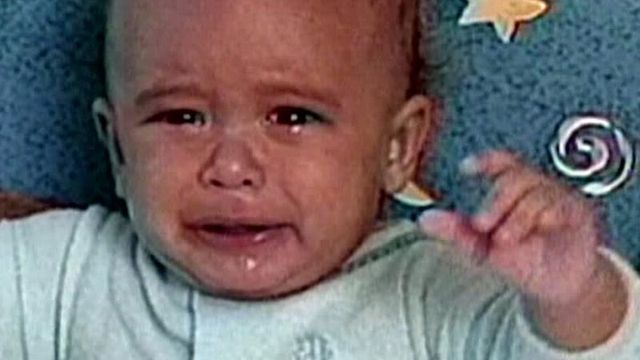Program teaches parents that babies' crying is OK
Period of PURPLE Crying is a growing nationwide initiative aimed at helping prevent shaken baby syndrome by educating parents about an extreme form of crying that's normal for babies.
Posted — UpdatedThat frustration, while normal, can sometimes have tragic consequences.
That was the case for Jennipher Dickens, whose ex-husband was convicted of severely shaking their 7-week-old son, Christopher. Now at age 3, Christopher suffers from permanent and irreversible brain damage.
His father, David Daughtrey, 25, admitted to shaking his son, and is serving a 39-month prison sentence for felony child abuse.
"My ex-husband was never someone you would suspect of doing something like this," Dickens said. "I think he was frustrated with the crying, and as a new parent, a young man in his early 20's, he didn't know any better."
Daughtrey is not alone.
“Crying is normal and OK, but it’s a challenging time, because parents don’t expect that crying can go on so long and/or be hard to sooth or understand,” Jackson said.
The “period of purple crying” is a phrase describing a stage in early infancy – anywhere from 2 weeks of age to 5 months of age – where babies can cry for up to five hours daily for seemingly no reason.
Frustration often accompanies the crying, which experts say, is a key trigger to shaking. Period of PURPLE Crying helps parents understand the crying and how to cope with it.
FirstHealth Moore Regional Hospital in Pinehurst and Richmond Memorial Hospital in Rockingham implemented Period of PURPLE Crying in 2009, and have educated the parents of more than 1,200 newborns since then.
Staff and volunteers from both hospitals are enthusiastic about the program, seeing what a difference it can make in the lives of both parents and infants.
"It's not something that you did as a parent or didn't do as a parent," said Marion Sharkanay, a volunteer with the program at Moore Regional. "That is education that hospitals are now giving to the parents before they go home."
Parents going through the program, say it has helped them learn to deal with not being able to soothe their crying babies.
Stacy Harris recently gave birth to her second child, Lauren.
"Just knowing that there is nothing wrong and that she is OK and that if I needed to, I can just put her down and walk away for a little while – it makes all the difference," she said. "I wish I had known all this when I had my son 2½ years ago."
“I think the most important piece of the 'PURPLE' program is to let the parents know this is normal,” said Christine Siska, clinical director of obstetrics at Moore Regional. “It is a normal period in a child’s life, and there’s an end to it.”
Dickens now volunteers with the program to help raise awareness of shaken baby syndrome.
"I never want another baby to have to go through what my son did. It's completely preventable and it's senseless,” she said. “Crying never hurt a baby. Shaking does.”
Doctors say that as a result of being shaken, her son, Christopher, is facing many challenges – he has difficulty walking, speaking and focusing.
"That's the thing about brain injury as a result of being shaken – it's permanent,” Dickens said. “These will be issues that affect him the rest of his life."
• Credits
Copyright 2024 by Capitol Broadcasting Company. All rights reserved. This material may not be published, broadcast, rewritten or redistributed.





